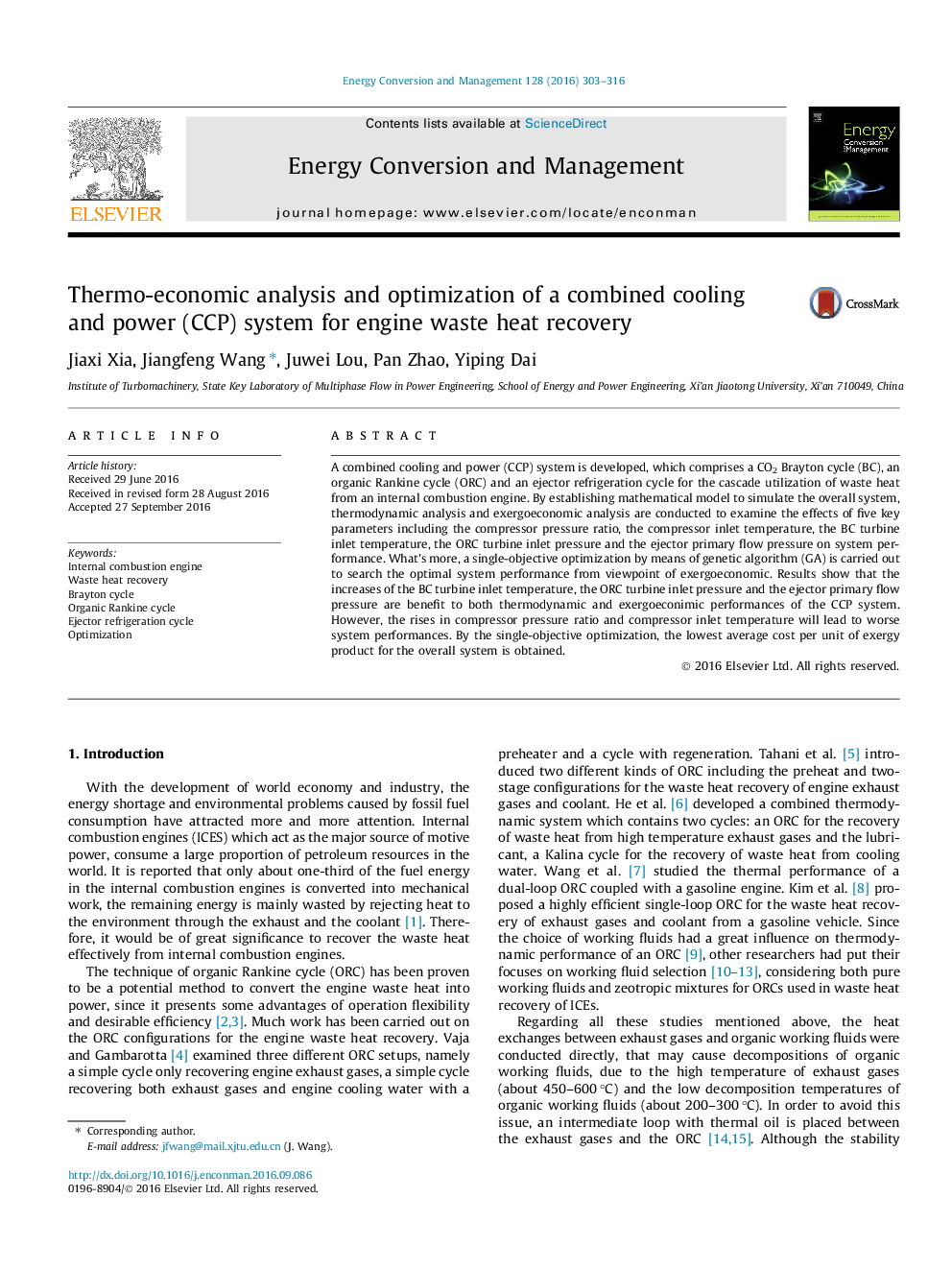| Article ID | Journal | Published Year | Pages | File Type |
|---|---|---|---|---|
| 5013343 | Energy Conversion and Management | 2016 | 14 Pages |
Abstract
A combined cooling and power (CCP) system is developed, which comprises a CO2 Brayton cycle (BC), an organic Rankine cycle (ORC) and an ejector refrigeration cycle for the cascade utilization of waste heat from an internal combustion engine. By establishing mathematical model to simulate the overall system, thermodynamic analysis and exergoeconomic analysis are conducted to examine the effects of five key parameters including the compressor pressure ratio, the compressor inlet temperature, the BC turbine inlet temperature, the ORC turbine inlet pressure and the ejector primary flow pressure on system performance. What's more, a single-objective optimization by means of genetic algorithm (GA) is carried out to search the optimal system performance from viewpoint of exergoeconomic. Results show that the increases of the BC turbine inlet temperature, the ORC turbine inlet pressure and the ejector primary flow pressure are benefit to both thermodynamic and exergoeconimic performances of the CCP system. However, the rises in compressor pressure ratio and compressor inlet temperature will lead to worse system performances. By the single-objective optimization, the lowest average cost per unit of exergy product for the overall system is obtained.
Keywords
Related Topics
Physical Sciences and Engineering
Energy
Energy (General)
Authors
Jiaxi Xia, Jiangfeng Wang, Juwei Lou, Pan Zhao, Yiping Dai,
